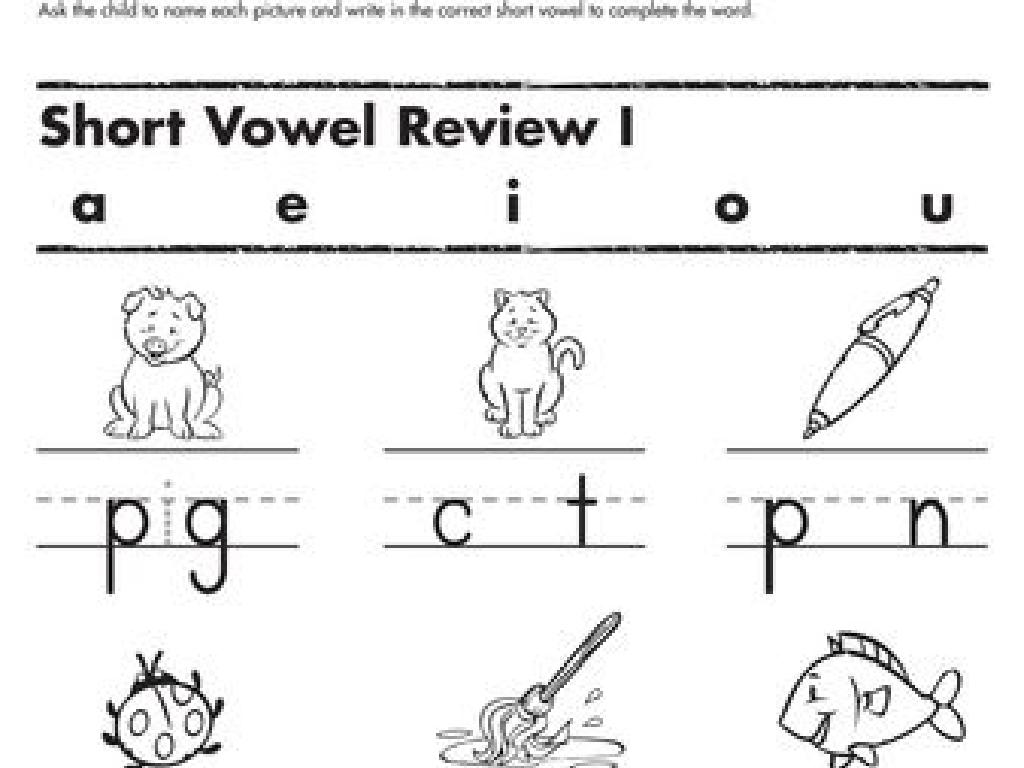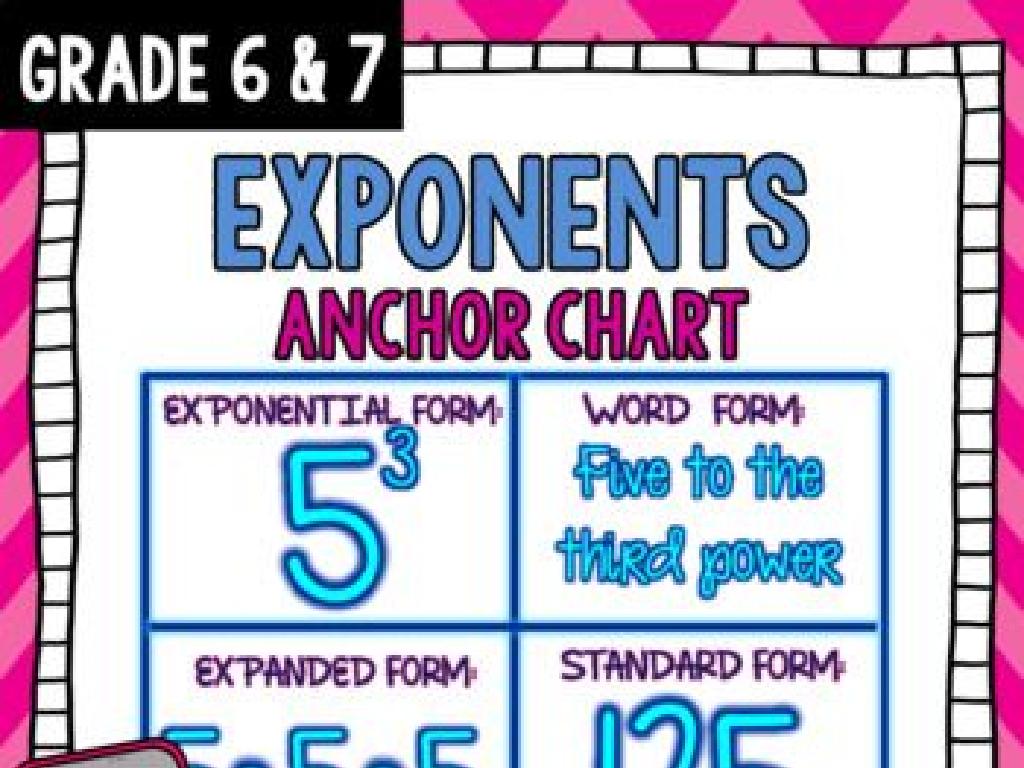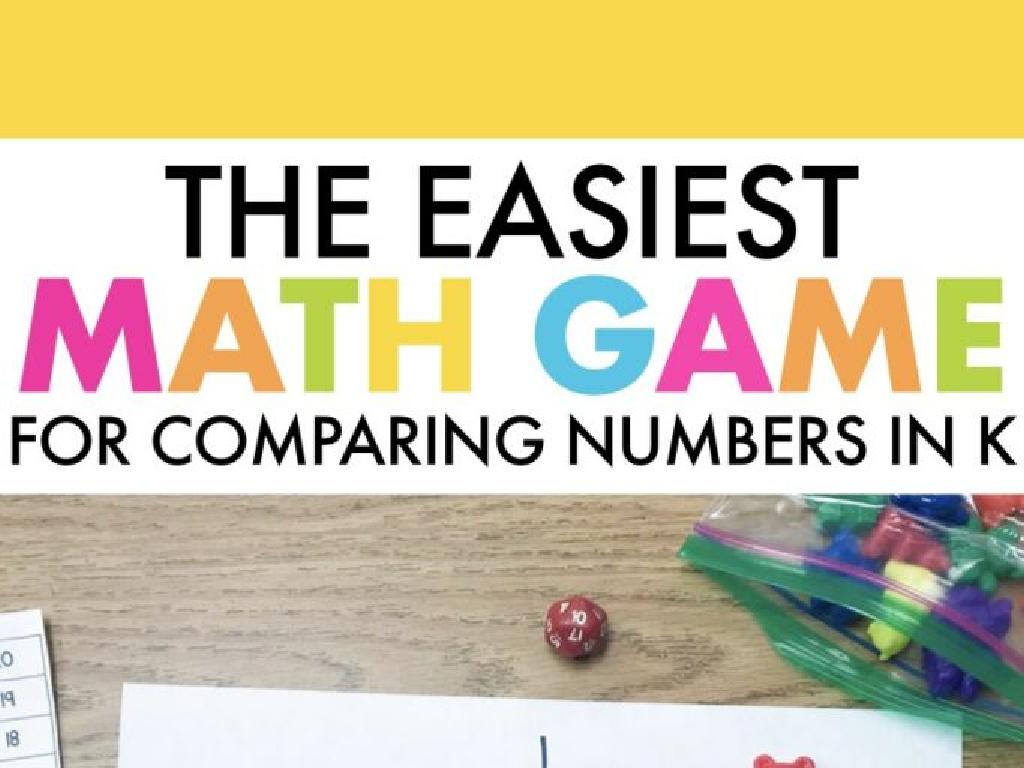Interpret Food Webs I
Subject: Science
Grade: Eighth grade
Topic: Ecological Interactions
Please LOG IN to download the presentation. Access is available to registered users only.
View More Content
Interpreting Food Webs in Ecosystems
– Ecology and our environment
– What are ecological interactions?
– Interactions like predation, competition, and symbiosis
– Exploring food webs
– Visual maps showing how energy flows through an ecosystem
– Significance of food webs
– They illustrate the balance and interdependence in nature
|
This slide introduces students to the concept of ecological interactions with a focus on food webs. Begin by discussing the role of ecology in understanding our environment and the various interactions that occur within ecosystems, such as predation, competition, and symbiosis. Explain that a food web is a complex network that maps out the flow of energy from one organism to another. Emphasize the importance of food webs in illustrating the balance of ecosystems and the interdependence of species. Encourage students to think about how each organism plays a crucial role in its ecosystem and what happens when one part of the web is affected. This will set the stage for more in-depth exploration of food webs and their components in subsequent lessons.
Exploring Food Webs in Ecosystems
– Define a Food Web
– A network of interconnected food chains
– Food Chains vs. Food Webs
– Food webs show complex feeding relationships, unlike the linear food chains
– Identify Producers, Consumers, Decomposers
– Producers make their own food, consumers eat others, decomposers break down dead matter
– Examples in an Ecosystem
– Grass (Producer) Rabbit (Consumer) Fox (Consumer) Bacteria (Decomposer)
|
This slide introduces the concept of a food web, a more complex structure compared to a food chain that shows the multiple feeding relationships in an ecosystem. Emphasize the difference between food chains and food webs, highlighting that food webs better represent the interconnectedness of organisms. Discuss the roles of producers (like plants), consumers (animals eating plants or other animals), and decomposers (organisms that break down dead material). Use tangible examples to illustrate these roles, such as a simple grassland ecosystem with grass, rabbits, foxes, and bacteria. Encourage students to think of other examples and consider the balance within an ecosystem.
Components of a Food Web
– Identify producers, consumers, decomposers
– Producers make energy, consumers eat them, decomposers break down waste.
– Role of each organism in the web
– Producers are the base, consumers are divided into levels, decomposers recycle nutrients.
– Energy flow through ecosystems
– Energy starts with the sun, moves to producers, then consumers, and finally decomposers.
– Interdependence in food webs
|
This slide aims to explain the basic components of a food web and the roles organisms play within it. Producers, such as plants, are the foundation, converting sunlight into energy via photosynthesis. Consumers are organisms that eat other organisms; they can be herbivores, carnivores, or omnivores. Decomposers, like fungi and bacteria, break down dead material, returning nutrients to the soil. Energy flow in ecosystems begins with the sun and moves through the food web via feeding relationships. Understanding the interdependence of these components helps students grasp the complexity and balance of ecosystems. Encourage students to think of examples within each category and consider how removing one component might affect the whole system.
Interactions Within a Food Web
– Understanding predator-prey dynamics
– Predators hunt prey, controlling population
– Keystone species significance
– Keystone species maintain structure and health of an ecosystem
– Effects of changes in the food web
– Alterations can lead to population shifts or extinctions
– Maintaining ecological balance
|
This slide aims to explain the complex interactions within a food web, focusing on predator-prey relationships, the role of keystone species, and the impact of changes within the web. Students should learn how predators and prey interact to maintain population balance and how keystone species are crucial for ecosystem stability. Discuss examples like the impact of wolves in Yellowstone on deer populations and how the removal of a keystone species like bees can disrupt pollination. Highlight the importance of each species and how even small changes can have large effects on the food web, potentially leading to a cascade of ecological consequences. Encourage students to think critically about conservation efforts and the protection of keystone species.
Analyzing a Food Web: Local Ecosystem Case Study
– Examine a local ecosystem’s food web
– Focus on how organisms are interconnected
– Identify predator-prey relationships
– Predators eat prey, controlling population
– Trace the flow of energy through the web
– Energy moves from plants up to top predators
– Discuss ecosystem balance and stability
– A stable ecosystem recycles energy efficiently
|
This slide aims to guide students through the process of analyzing a food web by using a local ecosystem as a case study. Students should examine the various organisms within the ecosystem and identify the relationships between them, particularly who eats whom. Emphasize the importance of predator-prey dynamics in controlling population sizes and maintaining balance. Trace how energy flows from producers (plants) to primary consumers (herbivores) and up to secondary and tertiary consumers (carnivores and omnivores). Discuss how a balanced ecosystem is one where energy is recycled and populations are kept in check. Encourage students to think critically about how changes to one part of the web could affect the whole system.
Human Impact on Food Webs
– Human activities and food webs
– Pollution and habitat destruction alter food webs.
– Understanding bioaccumulation
– Toxins build up in organisms over time.
– Conservation and food web protection
– Efforts include protected areas and sustainable practices.
– Case studies of human impact
|
This slide aims to educate students on the complex interactions between human activities and food webs. Highlight how pollution, overfishing, and habitat destruction can lead to imbalances in food webs, affecting the entire ecosystem. Explain bioaccumulation as the process where toxins become concentrated in an organism, moving up the food chain and impacting top predators. Discuss various conservation efforts, such as establishing protected areas, enforcing fishing regulations, and promoting sustainable resource use, to mitigate human impact on food webs. Use case studies, like the impact of DDT on bird populations or overfishing’s effect on marine ecosystems, to provide concrete examples of these concepts in action.
Class Activity: Construct Your Own Food Web
– Create a Food Web with given organisms
– Identify Producers, Consumers, Decomposers
– Producers make their own food, consumers eat others, decomposers break down dead material
– Explain relationships in your Food Web
– Show who eats whom, energy flow direction
– Present your Food Web to the class
|
This activity is designed to help students understand the complexity of ecological interactions within a food web. Provide a list of organisms that includes various producers, consumers, and decomposers. Students will use this list to create their own food web, identifying the role of each organism and the connections between them. Encourage students to think about the flow of energy in the ecosystem and the balance necessary for its health. Once completed, students will present their food web to the class, explaining the interdependence of the organisms within it. Possible variations of the activity could include creating food webs for different ecosystems or adding in hypothetical environmental changes to see how the web adapts.
Conclusion: The Web of Life
– Recap: Food Webs’ Role
– Food webs show how energy flows through an ecosystem.
– Q&A: Open Floor Discussion
– Feel free to ask any questions or share thoughts.
– Reflect on Today’s Insights
– Think about how all species are interconnected.
– Understanding Ecological Balance
|
As we wrap up today’s lesson on food webs, it’s crucial to emphasize their significance in maintaining ecological balance. Food webs illustrate the complex interplay between different organisms and how energy moves through an ecosystem. Encourage students to ask questions to clarify their understanding or delve deeper into the topic. Use this time to foster an open discussion that can lead to a more profound comprehension of the material. Finally, prompt students to reflect on the interconnectedness of all life forms and the impact of each organism within a food web. This reflection will help solidify their understanding of ecological interactions and the importance of every species in sustaining the health of our environment.





